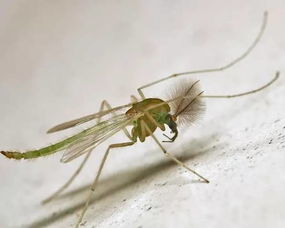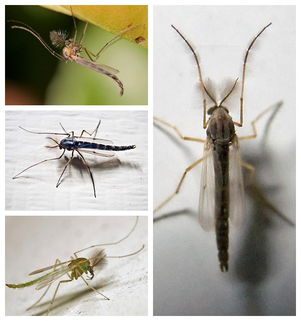
Understanding Biting Midges Bites: A Comprehensive Guide
Biting midges, also known as no-see-ums or punkies, are tiny insects that can cause significant discomfort and irritation. If you’ve ever been bitten by these pesky creatures, you know just how annoying and itchy their bites can be. In this article, we’ll delve into the details of biting midges, their bites, and how to deal with them effectively.
What Are Biting Midges?

Biting midges belong to the family Ceratopogonidae and are found worldwide, except in Antarctica. These tiny insects are less than 1/8 of an inch long, making them almost invisible to the naked eye. Despite their small size, they can cause quite a bit of trouble, especially when they bite.
Why Do Biting Midges Bite?

Biting midges feed on the blood of animals, including humans. They do this to obtain the necessary nutrients for their survival. When they bite, they inject saliva into the skin, which can cause irritation and itching. While their bites are generally not harmful, they can be quite uncomfortable and can lead to allergic reactions in some individuals.
Identifying Biting Midges Bites

Biting midges bites are often mistaken for mosquito bites, but there are some key differences. Biting midges bites are usually smaller and more pinpoint than mosquito bites. They often appear in clusters and can be very itchy. In some cases, they may also cause a mild swelling or redness around the bite area.
| Feature | Biting Midges Bites | Mosquito Bites |
|---|---|---|
| Size | Small, pinpoint | Large, puffy |
| Location | Clustered, often on exposed skin | Random, often on legs and arms |
| Itching | Severe, can last for days | Moderate, can last for a few days |
| Swelling | Mild to moderate | Severe, can lead to welts |
Preventing Biting Midges Bites
Preventing biting midges bites is the best way to avoid their discomfort. Here are some tips to help you stay bite-free:
- Stay indoors during peak biting times, which are usually dawn and dusk.
- Wear long-sleeved shirts and pants when outdoors.
- Apply insect repellent containing DEET, picaridin, or oil of lemon eucalyptus.
- Use screens on windows and doors to keep midges out.
- Remove standing water from your property, as it can serve as a breeding ground for midges.
Dealing with Biting Midges Bites
Once you’ve been bitten by a midge, there are several ways to alleviate the discomfort:
- Wash the bite area with soap and water to prevent infection.
- Apply a cold compress to reduce swelling and itching.
- Use over-the-counter antihistamines or hydrocortisone cream to relieve itching.
- Consider using a homeopathic remedy, such as arnica or calendula, to soothe the skin.
When to Seek Medical Attention
In most cases, biting midges bites are harmless and can be treated at home. However, if you experience any of the following symptoms, it’s important to seek medical attention:
- Severe swelling or redness around the bite area
- A fever or chills
- Difficulty breathing or swallowing
- A severe allergic reaction, such as hives or anaphylaxis




